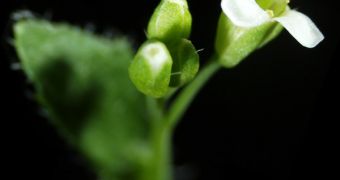UC Davis researchers discovered a circadian clock gene in plants that also works in human cells, controlling part of the mechanism.
Even more interesting, the human gene also works in plant cells.
Along with UC Davis postdoctoral scholar Matthew Jones, colleagues at Rice University in Houston and the Salk Institute for Biological Studies in La Jolla, Stacey Harmer, associate professor of plant biology in the UC Davis College of Biological Sciences and senior author on the paper, analyzed the lab plant Arabidopsis.
They checked available databases for genes that were switched on along with the central plant clock gene, TOC1, and identified the "Jumonji-containing domain 5 gene," or JMJD5.
This gene makes a protein that can chemically change the histone proteins around which DNA is wrapped, thus regulating the way that genes are turned on and off.
When the researchers took out the gene from Arabidopsis plants, they observed that its inner circadian clock ran faster than normal.
Humans have a similar gene, and when removed, their circadian clock also speeds up.
The scientists were surprised to see that when they introduced the plant gene into the defective human cells, the clock went back to normal, and this also worked the other way around.
Harmer said that “it's surprising to find a clock gene that is performing the same function across such widely unrelated groups.”
She added that most living things, whether they are plants, animals of fungi, have circadian clocks that work very similar to one another, but are built from different pieces; this newly identified gene is the exception to the rule.
This gene, that does the same things in plants and in humans can be explained by convergent evolution, which is in fact a more plausible theory that the one of a distant common ancestor.
Convergent evolution is when two organisms get to the same solution of a problem, apparently from different starting points.
Having very precise circadian rhythms is crucial to the survival of living things, since it controls everything, from sleep and wake cycles, to when plants make flowers.
This research is published this week in the journal Proceedings of the National Academy of Sciences.

 14 DAY TRIAL //
14 DAY TRIAL //